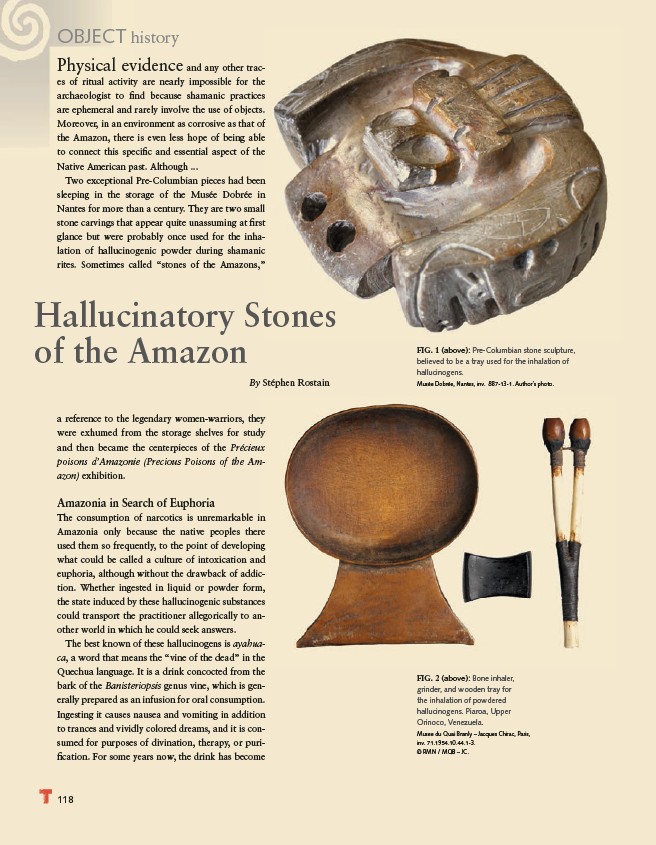
OBJECT history
Physical evidence and any other traces
of ritual activity are nearly impossible for the
archaeologist to fi nd because shamanic practices
are ephemeral and rarely involve the use of objects.
Moreover, in an environment as corrosive as that of
the Amazon, there is even less hope of being able
to connect this specifi c and essential aspect of the
Native American past. Although ...
Two exceptional Pre-Columbian pieces had been
sleeping in the storage of the Musée Dobrée in
Nantes for more than a century. They are two small
stone carvings that appear quite unassuming at fi rst
glance but were probably once used for the inhalation
Hallucinatory Stones
of the Amazon
118
of hallucinogenic powder during shamanic
rites. Sometimes called “stones of the Amazons,”
By Stéphen Rostain
a reference to the legendary women-warriors, they
were exhumed from the storage shelves for study
and then became the centerpieces of the Précieux
poisons d’Amazonie (Precious Poisons of the Amazon)
exhibition.
Amazonia in Search of Euphoria
The consumption of narcotics is unremarkable in
Amazonia only because the native peoples there
used them so frequently, to the point of developing
what could be called a culture of intoxication and
euphoria, although without the drawback of addiction.
Whether ingested in liquid or powder form,
the state induced by these hallucinogenic substances
could transport the practitioner allegorically to another
world in which he could seek answers.
The best known of these hallucinogens is ayahuaca,
a word that means the “vine of the dead” in the
Quechua language. It is a drink concocted from the
bark of the Banisteriopsis genus vine, which is generally
prepared as an infusion for oral consumption.
Ingesting it causes nausea and vomiting in addition
to trances and vividly colored dreams, and it is consumed
for purposes of divination, therapy, or purifi
cation. For some years now, the drink has become
FIG. 1 (above): Pre-Columbian stone sculpture,
believed to be a tray used for the inhalation of
hallucinogens.
Musée Dobrée, Nantes, inv. 887-13-1. Author’s photo.
FIG. 2 (above): Bone inhaler,
grinder, and wooden tray for
the inhalation of powdered
hallucinogens. Piaroa, Upper
Orinoco, Venezuela.
Musee du Quai Branly – Jacques Chirac, Paris,
inv. 71.1954.10.44.1-3.
© RMN / MQB – JC.